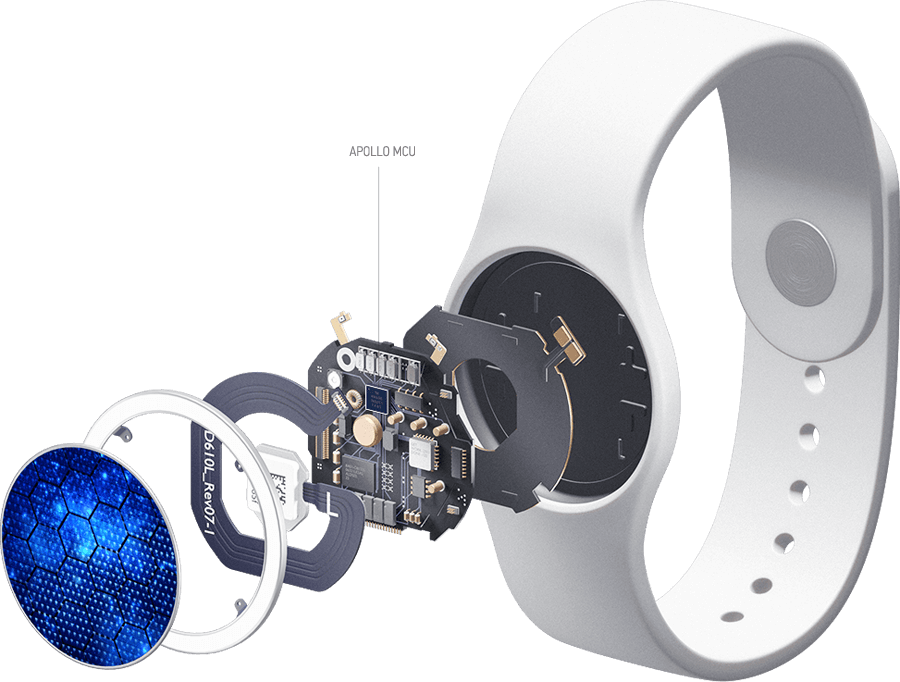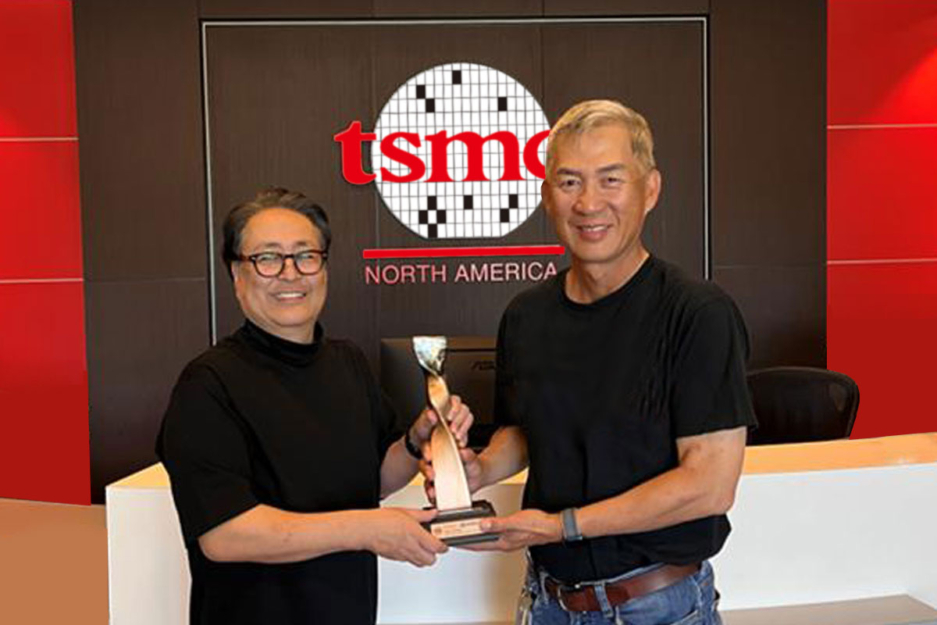
With around 2MB of MRAM and one.8MB of SRAM, the Apollo4 Blue has in excess of sufficient compute and storage to handle intricate algorithms and neural networks though displaying vibrant, crystal-apparent, and clean graphics.
RTC 01 The Ambiq® true-time clock is definitely the business leader in electrical power administration, operating as an incredibly low energy "preserve-alive" supply for that method and bypassing the need for the key MCU to electricity down the product to preserve electric power.
[168] The disk also carries a listing on the Management on the US Congress, a listing of members in the 4 committees of the House and Senate answerable for the NASA laws, as well as the names of NASA's previous and then-existing top rated management.[169]
EDBI Pte Ltd employs cookies and equivalent systems that happen to be needed to run the web site and perform statistical Evaluation to provide you with the absolute best user working experience. We use this data to be able to make improvements to and customise your browsing experience and for analytics and metrics about our readers equally on this website together with other media.
It also shown the S-IVB third stage's initial in-flight restart. The mission employed a Block I command and service module modified to check many essential Block II revisions, which include its warmth shield at simulated lunar-return velocity and angle.
It took about twelve seconds to the rocket to very clear the tower. All through this time, it yawed one.25 degrees clear of the tower to make sure sufficient clearance despite adverse winds; this yaw, Whilst smaller, might be noticed in launch pics taken through the east or west.
Apollo 11 was released by a Saturn V rocket from Kennedy House Center on Merritt Island, Florida, on July sixteen at thirteen:32 UTC, and it was the fifth crewed mission of NASA's Apollo program. The Apollo spacecraft had a few components: a command module (CM) by using a cabin to the 3 astronauts, the sole section that returned to Earth; a provider module (SM), which supported the command module with propulsion, electrical electric power, oxygen, and h2o; and also a lunar module (LM) that experienced two phases—a descent stage for landing within the Moon and an ascent phase to put the astronauts back into lunar orbit.
Apollo4 Blue 01 Ambiq®, the chief in minimal-energy system on chip (SoC) style and design, has Yet again raised the bar While using the Apollo4 Blue SoC. With the bottom dynamic and rest manner electric power that you can buy, the Apollo4 Blue SoC makes it possible for designers of up coming-generation wearables and clever devices to just take their revolutionary products and solutions to the subsequent level.
The goal of Apollo four (together with the Saturn V's other uncrewed take a look at flight, Apollo 6) was to qualify the start motor vehicle, the Apollo spacecraft, and the ground devices, to the crewed lunar landing missions that would adhere to.
A proprietary calibration algorithm to digitally tune the RC and XT oscillator frequency with precision as low as 2 ppm.
Over the mission, the induce was diagnosed as the rendezvous radar switch staying in the incorrect posture, causing the computer to method knowledge from both equally the rendezvous and landing radars concurrently.[121][122] Software package engineer Don Eyles concluded inside of a 2005 Guidance and Manage Convention paper that the challenge was resulting from a components style and design bug Beforehand found all through tests of the main uncrewed LM in Apollo five. Owning the rendezvous radar on (so it absolutely was warmed up in case of an emergency landing abort) should have been irrelevant to the computer, but an electrical phasing mismatch between two parts of the rendezvous radar system could induce the stationary antenna to look to the pc as dithering backwards and forwards amongst two positions, based upon how the hardware randomly run up.
These spools experienced exactly the same height and mass and contained the identical electrical connections as the particular phases.[sixty seven]
The temperature sensor even more tracks entire body variations affected by eating plan and physical exercise. The state-of-the-artwork wearable comes in an ultra-light-weight 3mm band width and is also manufactured from fighter-jet grade titanium showcasing a diamond-like coating and pointing edge for guided donning.
"Outside of Detent" meant the adhere experienced moved from its centered posture; it was spring-centered similar to the flip indicator in an auto. Address 413 on the Abort Steerage Program (AGS) contained the variable that indicated the LM experienced landed.[ten]

Get Smart. Use Less Energy.
Ultra-low power SoCs for IoT endpoint devices
that demand complex operations
and longer battery life.
✍ Ambiq® is committed to further improve the quality of life by enabling the intelligence of endpoints while further reducing carbon footprints. Ambiq – your partner in endpoint intelligence.
✯✯✯Based in Austin, San Jose, Hsinchu, Shenzhen, and Shanghai, our leadership and management teams consist of advocates, builders, enthusiasts, entrepreneurs, explorers, incubators, inventors, pioneers, protectors, thinkers, and visionaries. With a diverse spectrum of experiences and skillset, we came together and united with one goal to enable the true Internet of Things where the battery-powered endpoint devices can truly be connected intuitively and intelligently 24/7.
Ambiq Wins the Demo of the Year Award at 2023 TSMC Technology Symposium
September 7, 2023, Austin, TX – Ambiq®, a leading developer of ultra-low-power semiconductor solutions that deliver a multifold increase in energy efficiency, was awarded the Demo of the Year Award by TSMC as a participant of the Innovation Zone at the 2023 TSMC North America Technology Symposium.
Ambiq Wins the Demo of the Year Award at 2023 TSMC Technology Symposium
During the April event, Ambiq showcased various product design wins using TSMC’s 22nm technology in wearables, digital health, smart home, Industrial IoT, pet trackers, and retail segments, with industry-leading energy efficiency. Ambiq also featured two live demos emphasizing its leadership in enabling endpoint AI with its HeartKit™ for remote patient monitoring and its graphics display capabilities for a vivid user interface.

TSMC pioneered the pure-play semiconductor foundry business model when it was founded in 1987, helping startup companies Pet health monitoring devices accelerate their innovations by providing access to the industry’s leading process technologies and manufacturing capacity. Since 2021, TSMC has expanded that mission with an Innovation Zone at its worldwide Technology Symposiums, highlighting how TSMC partners with startup companies to enable cutting-edge products from various applications, including high-performance computing, communication, automotive, IoT, and consumer segments.
“We’re grateful to TSMC and our booth visitors for allowing us to share our energy-efficient technology and processor solutions with them,” said Ambiq’s CEO, Fumihide Esaka. “We’re moving towards an exciting frontier of AI becoming more engrained with our daily lives. With that vision on the horizon, we will continue to develop innovative and first-of-its-kind ultra-low-powered solutions that keep innovation and sustainability in mind.

Ambiq’s mission is to develop the lowest-power semiconductor solutions to enable intelligent devices everywhere by developing the lowest-power semiconductor solutions to drive a more energy-efficient, sustainable, and data-driven world. Ambiq has helped leading manufacturers worldwide develop products that last weeks on a single charge (rather than days), while delivering a maximum feature set in compact industrial designs. Ambiq’s goal is to take Artificial Intelligence (AI) where it has never gone before in mobile and portable devices, using Ambiq’s advanced ultra-low power system on chip (SoC) solutions. Ambiq has shipped more than 200 million units as of March 2023.
Ambiq Designs Low-Power for Next Gen Endpoint Devices
Ambiq’s VP of Architecture Artificial intelligence at the edge and Product Planning, Dan Cermak, joins the ipXchange team at CES to discuss how manufacturers can improve their products with ultra-low power. As technology becomes more sophisticated, energy consumption continues to grow. Here Dan outlines how Ambiq stays ahead of the curve by planning for energy requirements 5 years in advance.
Ambiq Highlights From Embedded World 2024
Facebook | Linkedin | Twitter | YouTube